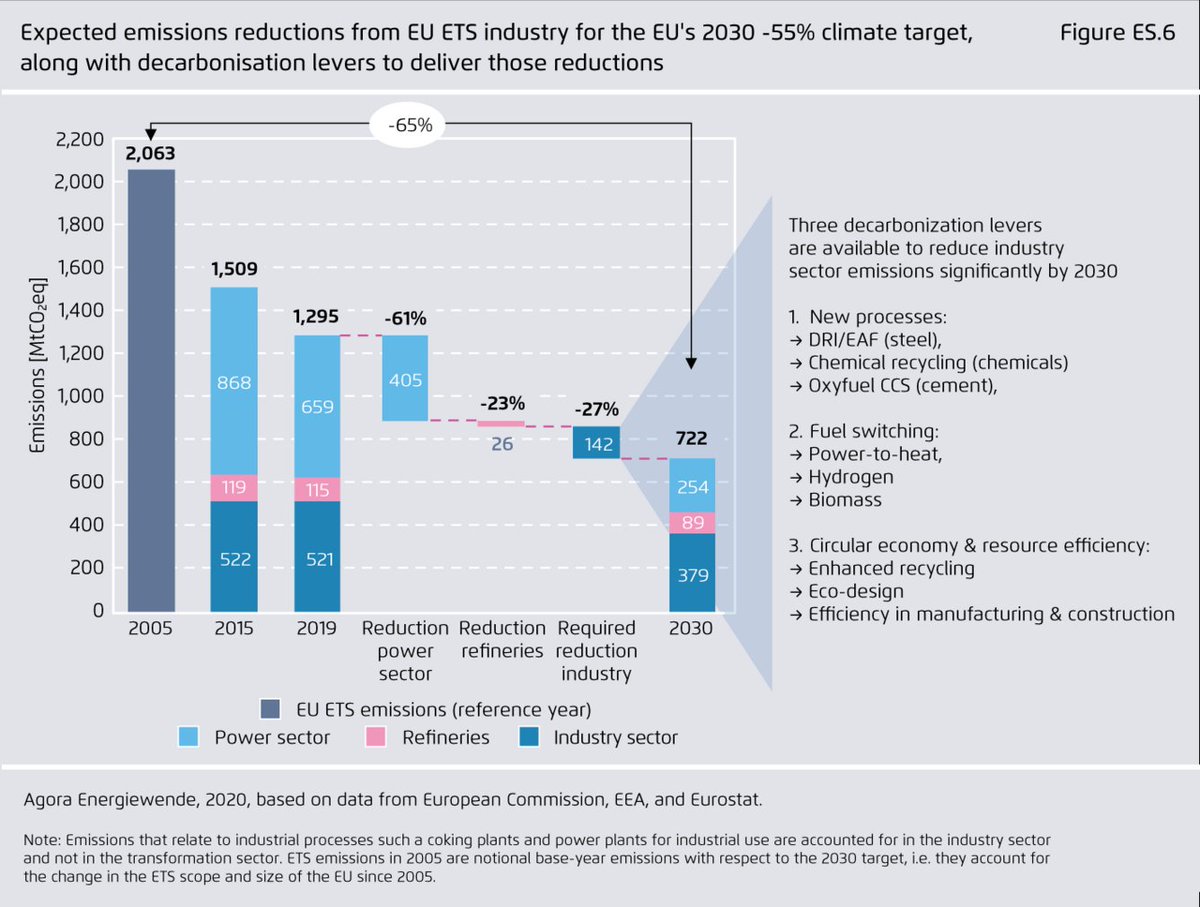
3 things this @nytimes article about decarbonizing steel fails to question critically. It thereby (unintentionally) contributes to preserve a fossil status quo instead of getting the transformation narrative right. Thread: (1/13) nytimes.com/2021/03/17/bus…
No. 1: Non-availability of H2
H2 use in steelmaking is presented in a way that the steel industry cannot act now because "[H2] ... is many years away". The article quotes ArcelorMittal's EU CEO: “Today, this is impossible, because there is no H2.” (2/13)
H2 use in steelmaking is presented in a way that the steel industry cannot act now because "[H2] ... is many years away". The article quotes ArcelorMittal's EU CEO: “Today, this is impossible, because there is no H2.” (2/13)
Both statements are true but in the article they lack the right context. The steel industry is facing a massive reinvestment wave before 2030. If H2 is not available should we reinvest into coal-based blast furnaces with lifetimes of 20 years that lead to a carbon lock-in? (3/13) 

The answer is no. The solution is to invest in DRI technology now. These plants can operate with a variable mix of natural gas/clean H2. Until sufficient amounts of clean H2 are available they can run on natural gas reducing emissions by 2/3 already. (4/13)
The current lack of H2 is no reason to postpone the steel transformation. See ArcelorMittal's own quote: “[We] would build [DRI] plants at Bremen and Eisenhüttenstadt, which could be run on gas as a transition fuel initially and later with H2.”(5/13) reuters.com/article/us-arc…
No. 2: Will CCU clean up steel?
The short answer is no. For CCU to be a viable strategy a lot of side conditions need to be in place: long-term CO2 storage in a product, a fully closed carbon cycle, biogenic carbon. Unfortunately, none of this is mentioned in the text. (6/13)
The short answer is no. For CCU to be a viable strategy a lot of side conditions need to be in place: long-term CO2 storage in a product, a fully closed carbon cycle, biogenic carbon. Unfortunately, none of this is mentioned in the text. (6/13)
The specific CCU technology mentioned in the article is problematic: the technology can only reduce 25% of the blast furnace's CO2 emissions. It produces ethanol which can be used as a transport fuel where the CO2 is released into the atmosphere shortly after. (7/13)
CCU with coal-based blast furnaces will be very problematic for a long time. As a large-scale solution, DRI has much better potential to reduce CO2 emissions fast and significantly with many steel companies working seriously on it (see thread). (8/13)
https://twitter.com/KWitecka/status/1371751112886394881?s=20
No. 3: Green steel labelling
How should green steel be defined? Steel that is “greener” than a coal-based process or steel that is produced with close to zero emissions? What if the previous definition accustomes the market to the wrong prices? (9/13)
How should green steel be defined? Steel that is “greener” than a coal-based process or steel that is produced with close to zero emissions? What if the previous definition accustomes the market to the wrong prices? (9/13)
The article describes how ArcelorMittal is selling “green steel” based on “selling an amount of steel equivalent to the carbon saved… by using natural gas in place of coke”. In other words that "green" steel still caused significant CO2 emissions. (10/13)
This is like replacing an SUV with a smaller car that runs on gasoline and claiming that the smaller car is making 1/3 of its distance emissions-free. As we saw, today everyone can have different definitions of "green" steel. (11/13)
For the steel transformation, it will be key to accustom the market to higher prices for truly green steel with a clear definition. That way progressive companies can distinguish themselves from the rest. (12/13)
The global steel industry can contribute to significant emissions reductions by 2030. The technology is there already. But for that to happen, we cannot afford to lose time. That's why it's important to focus on the right qustions and tell the narrative right. (13/13)
Very happy to discuss this and hear other views: @gnievchenko @RENEWIndustry @nerdsofsteel @MatildaAxelson @JMGlachant @CoalFreeDave @valenvogl @abhinav12375056 @MGornerup @WillHall92 @AhmanMax
• • •
Missing some Tweet in this thread? You can try to
force a refresh





